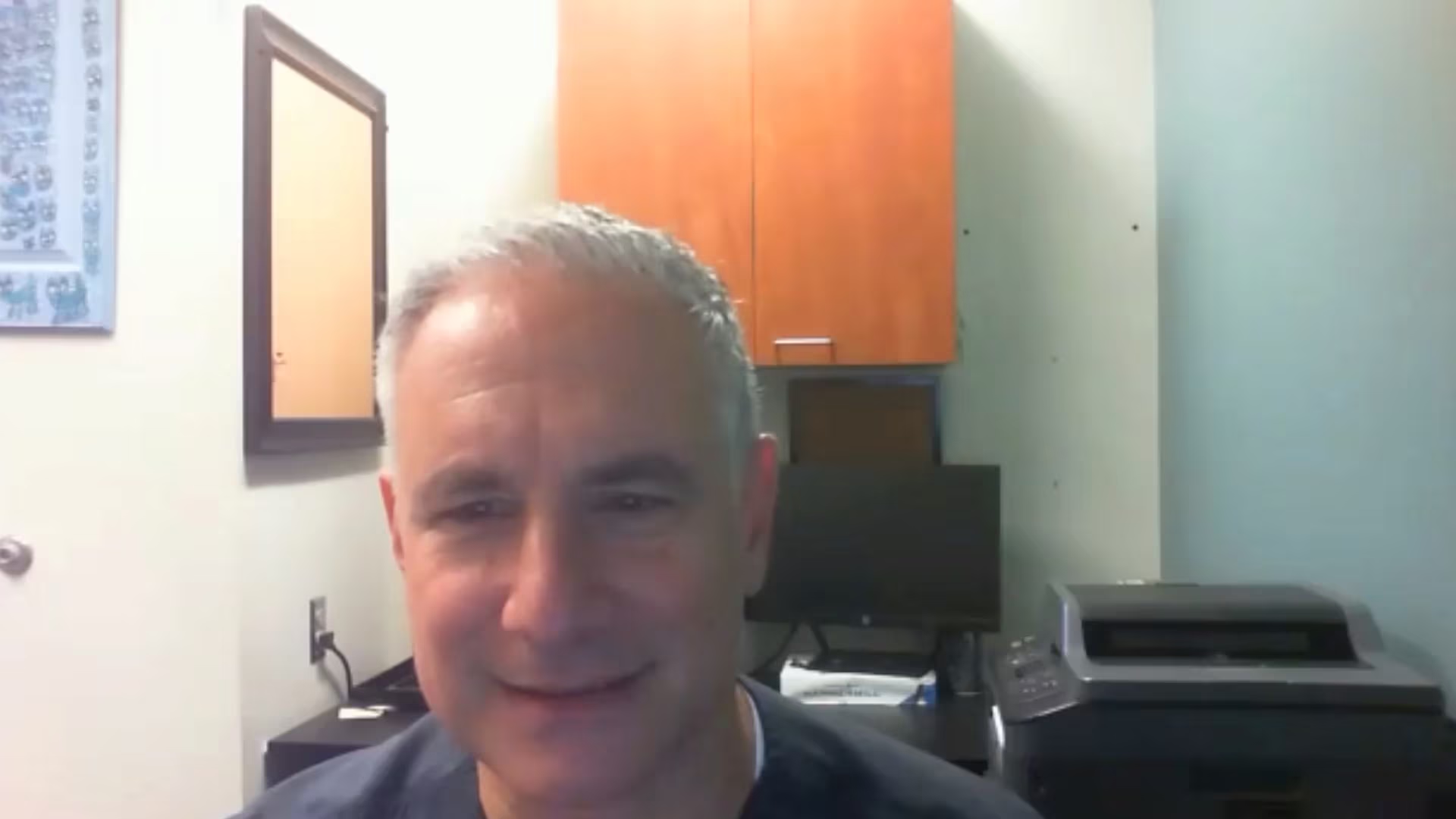John D Sheppard, Hawaiian Eye and Retina 2023: Phaco and keratopathy – sequential or combined keratoplasty?
It was a pleasure to have the opportunity to meet with Dr John D Sheppard (Eastern Virginia Medical School, Norfolk, VA, USA) about his presentation on what to consider when choosing between sequential or combined keratoplasty.
Questions:
- What are the advantages and disadvantages of combined phacoemulsification and keratoplasty versus sequential surgery? (0:10)
- What patient factors would you consider when making the choice of combined versus sequential surgery? (3:25)
- What clinical evidence supports the use of combined surgery? (5:03)
The presentation entitled, Phaco and Keratopathy: Sequential or Combined Keratoplasty? was presented at the Hawaiian Eye and Retina 2023 meeting, 14–20 January, 2023.
Disclosures: John D Sheppard has no financial or non-financial relationships or activities to declare in relation to this interview.
Support: Interview and filming supported by Touch Medical Media. Interview conducted by Lisa Glass.
Filmed as a highlight of Hawaiian Eye and Retina 2023.
Hello I’m Dr. John Sheppard from Norfolk, Virginia.
What are the advantages and disadvantages of combined phacoemulsification and keratoplasty versus sequential surgery?
The most common scenario in a patient’s journey through visual rehabilitation, suffering concurrently from cataracts and endothelial dystrophy becomes a decision to combine the procedures. If we know that the endothelial disease is minimally to moderately symptomatic but unstable, and that the cataract is responsible for the worsening recent vision changes, then a combined procedure is always recommended. The combined procedure allows the surgeon to see reasonably well enough through the moderately diseased cornea to perform a safe cataract extraction with an appropriate intraocular lens selection. On the other hand, the endothelial keratoplasty performed concomitantly will avoid post-operative corneal decompensation in patients with susceptible endothelium and borderline corneal function. That decision for me depends on several things. The easiest decision is if the contralateral eye has already been taken care of with a catheter extraction and a subsequent decompensation of the cornea. It is absolutely logical to do a combined procedure on the second day. If, however, this is the first time the patient who has Fuchs dystrophy, many considerations are key to making a reasonable, patient-friendly decision to do a combined or sequential surgery. If the Fuchs is stable, the perimetry is not worsening over time and the patient does not really have morning blurring from morning corneal oedema, then I’m happy to recommend with proper informed consent that the patient have just a cataract operation. We are able to do subsequent keratoplasty if need be and the patient needs to understand that they may have a bit of residual glare from the pigment on the endothelium from Fuchs dystrophy, but that the process will be far simpler with the cataract operation. We’re very confident with modern cataract, surgical techniques and minimal phacoemulsification, particularly with concomitant femtosecond laser surgery that we can preserve endothelial function with minimal endothelial loss and no subsequent decompensation of the cornea. The cornea is maybe a little slow to heal and a little thicker than you would otherwise expect, postoperatively. But the vast majority of these patients do beautifully without a transplant and can await a transplant should the results become unsatisfactory or an unsuspected decompensation occurs. So we have the best of both worlds for our patients. Many times now, the informed consent also involves a discussion of culture and endothelial cell transplantation, because that is a significant advance in terms of, we believe, outcomes, in terms of refractive surgical results and not altering the posterior refractive surface, but also in terms of a theoretically decreased risk of allograft rejection. Not to mention four hours of face down with a cultured endothelial cell transplant as opposed to two days of face up, which patients universally detest but accept.
What patient factors would you consider when making the choice of combined versus sequential surgery?
That’s the art of medicine. You have to read the patient. You have to read the family. If the family’s absent or unconcerned, I become aware of increased risk, noncompliance, missing visits, and the postoperative care of a transplant is much more demanding than the postoperative care of a cataract operation. So if I don’t think the patient is going to be really great at taking care of themselves and they don’t have good family support and they may be non-compliant with their medications, then I’ll do everything I can to ethically avoid doing a transplant, at least the first time around. So that’s a very important patient factor. In addition, it’s visual expectations. Folks who watch TV and sometimes look at print on a computer as opposed to reading fine print and don’t drive at night, don’t have demanding close-up hobbies like watch-making may be very happy with a 20/30 eye with some glare and scattered from the pigmented endothelium of a Fuchs dystrophy cornea and do very well with just a cataract operation. On the other hand, I’ve had accountants who just demand 20/20 crisp vision without any glare, a contrast sensitivity lost. Certainly a pilot, certainly people who do near tasks, certainly a physician who performs surgery and so many other folks with prolonged, detailed visual task in their avocation or advocation will be more demanding and want to have full visual rehabilitation, including the compromised end, the feeling.
What clinical evidence supports the use of combined surgery?
There’s a number of prospective and retrospective trials looking at patients who have sequential surgery and combination surgery basically in good hands and with good preoperative judgment. The results are quite similar. The convenience factor, the cost factor, the disruption of lifestyle for both the patient and their family are the key variables. And studies have shown that despite similar outcomes with the sequential surgery and the combined surgery, the downtime for the patient and the family. And the loss of potential income is clearly greater with a sequential surgery, and thus that advantage of combined surgery becomes an essential part of the informed consent process.
Subtitles and transcript were auto-generated.






